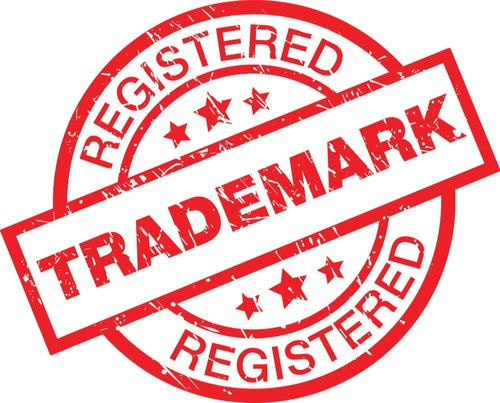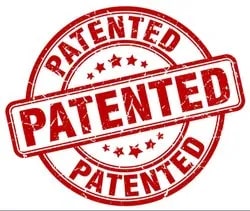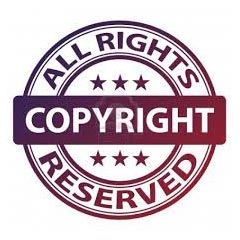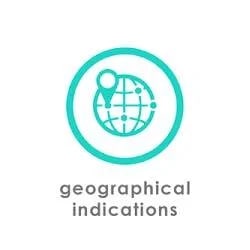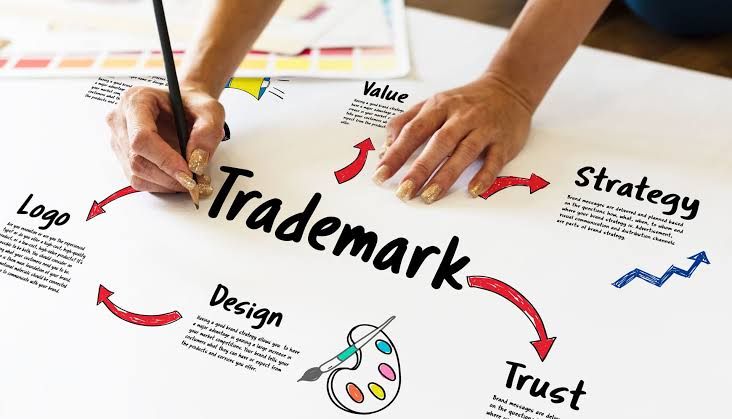IPR Services
Leading of Trademark Services, Patent Services, Copyright Services, Industrial Design Registration Services, Geographical Indication Services, Custom Office IPR Registration Services, IPR Infringement Services and IPR Agreements Drafting and Filing Services from Gurugram.
Preferred Buyer From
| Location | Anywhere in India |
Trademark Law In India
A trademark is a visual symbol which may be a word, signature, name, device, label, numerals or combination of colors, three dimensional image, domain name of website, shape of goods used by one undertaking on goods or services or other articles of commerce to distinguish it from other similar goods or services originating from a different undertaking.
Trademark Service
- Advisory
- Trademark Search & Opinion
- Trademark Application Filling
- Drafting of User Affidavit by way of Evidence
- International Registration under Madrid Agreement
- Convention Trademark Filing in other countries
- International Registrations (IR) designating to India
- Provisional Refusals response and handling
- Responding to Office Actions
- Trademark Hearing
- Renewal & Maintenance
- Recordal services: assignments, change of name/address
- Handling rectification of clerical error by TMR
- Expedited Legal Certificate
- Drafting Assignment Deed & Licensing Agreement
- Filing and responding to Oppositions/Rectification
- Watch service for conflicting marks with recommendation on oppositions
- Filing Oppositions and Rectifications/Cancellation
- Handles infringement and passing off proceeding before courts
- Filling of Application for enlisting in “Well-Known Mark” category
- Portfolio Management
Important Key Points/FAQs About Trademarks
What is trademark & type of trademark?
If it is a word it should be easy to speak, spell and remember and which are invented words or coined words or unique geometrical designs.
Please avoid selection of a geographical name, common personal name or surname. No one can have monopoly right on it. Avoid adopting laudatory/admiring word or words that describe the quality of goods (such as best, perfect, super etc.). It is advisable to conduct a market survey to ascertain if same/similar mark is used in market.
Who can apply for a trademark and how?
Any person (natural/artificial-legal entity) claiming to be the proprietor of a trademark used or proposed to be used by him, may apply in writing in prescribed manner for registration. The application should contain the trademark, the goods/services, name and address of applicant and agent (if any) with power of attorney, the period of use of the mark. The application should be in English or Hindi. It should be filed at the appropriate office. The applications can be submitted personally at the Front Office Counter of the respective office or can be sent by post. These can also be filed on line through the e-filing gateway available at the official website.
Process of Registration of Trademark in India
In India, once someone files online/off line application for registration of a trademark in a particular jurisdiction of his choice, the usual time taken by the Trademarks Registry from filing to registration is between 18-24 months for a straight forward application.
The Indian Trade Mark Office securitize all applications with respect to the
(a) Filing requirements
(b) Absolute Grounds (Under Section 9 of Trademark Act, 1999) or
(c) Relative Grounds (Under Section11 of Trademark Act, 1999) over the earlier identical or confusingly similar trademark applications/registrations for the goods or services concerned for refusal.
If it is found to be registrable, the examiner will accept the same and forward it for advertisement in the Journal. In case of any objections, the Examiner issues an Examination report and the applicant has to prepare and file a response in 30 days. If the Registrar’s decision is again against the registration of the mark, the Trademark Registry fixes a date of personal hearing. The Applicant is then required to represent his case before the Registrar and satisfy the Registrar regarding acceptability of the proposed mark for registration. In the affirmative, it will be published for the opposition of third parties for 4 months in Official Trademark Journal. Application will be registered within 2-3 months after expiry of period of filing notice of opposition, provided that no opposition is received.
Filing Requirement (sent to resident agent for filing of application)
1. Name & address of the applicant
2. State of incorporation (Individual/Corporate Entity)
3. Trade description of the application
4. Representation of the mark (word, signature, name, device, label, numerals or combination of colors, three dimensional image, domain name of website, shape of goods )
5. Class(es) of goods/services [NICE Classification of Goods & Services from Class 1 to 45]
6. Authorization of agent (no legalization or notarization required)
7. Date of first use in India [required to file user affidavit of claiming prior usage] or whether the mark is proposed to be used
8. In case priority is being claimed, a certified copy of the priority document along with its certified English translation.
Well – Known Trademark
The Trade Marks Rules, 2017 (‘New Rules’) and the public notice dated May 22, 2017 issued by the Trade Marks Registry inter alia provide for a mechanism whereby brand owners can file an application with the Registrar of Trademarks (‘Registrar’) for determination of a trademark as ‘well known’. The key provisions in connection with this mechanism have been briefly summarized below:
(i) The application to the Registrar for determination of a trademark as ‘well-known’ will have to be based on, inter alia, the following criteria:
a. knowledge or recognition in the relevant section of the public;
b. duration, extent, geographical area of use and promotion / advertisement;
c. duration and geographical area of any registration of or any application for registration reflecting use or
recognition of the trade mark;
d. record of successful enforcement of the rights by any court or the Registrar; and
e. number of actual or potential consumers / person involved in the distribution of the goods or services.
The application will have to be accompanied by documentary evidence for each fact that is sought to be claimed including evidence as to use of the trademark, including publicity and advertisement, applications for registration made or obtained in India and outside, annual sale turnover based on the trademark etc.
(ii) If the Registrar determines that the trademark is well-known and after deciding on the objections received (if any), the Registrar will publish the mark in the Trademark Journal and include it in the list of well-known trademarks. An appeal lies to the Intellectual Property Appellate Board (‘IPAB’) within three months from the date of any decision of the Registrar.
The New Rules do not provide for a specific time frame within which the Registrar will determine if the mark is well-known. One of the main advantages of the ‘well known’ mark status in India, if the mark is registered, is the availability of a remedy of dilution under Section 29(4) of the Trade Marks Act, 1999.
IRDI Provisional Refusal of Trademark in India
Every international registration designating India received from the International Bureau of WIPO will be examined by the TMR under the provisions of the Trade Marks Act 1999 & Rules made there under. If there is any objection for protection of such registration, a provisional refusal will be notified to the International Bureau of WIPO latest within the period of 18 months from the date the international registration was notified to India. The International Bureau records the provisional refusal in the international register and communicates such provisional refusal to the holder (applicant) of the international registration. The holder may respond to the provisional refusal. The TMR then considers the response of the holder of the international registration and may either confirm the refusal or move for publication of the international registration in the Trade Marks Journal.
Receipt of Advice under Section 36E of the Trademark Act, 1999 provides that the Registrar shall on receipt of an advice from the International Bureau about any IRDI (International Registration Designating India) keep a record of the particulars of that international registration in the prescribed manner. Where, the Registrar find that the trademark which is the subject of an international registration designating India, cannot be protected, he shall before the expiry of refusal period as applicable under Article 5 of the Madrid Protocol, shall in the prescribed manner notify to the International Bureau a provisional refusal against trademark protection. The reasons trademark rejections are provided in the provisional refusal examination report.
Responding to IRDI Provisional Refusal of Trademark
While responding to IRDI provisional refusal of trademark, the applicant will file response to provisional refusal in the same manner to filing reply to office action against a trademark application filed in India. In general, the Attorney draft the reply to provisional refusal, information/documents will be sought from the applicant so that the same can be mentioned in the response to Provisional Refusal.
In view of the Trademark Registry advice in respect of Madrid applications, the Registry now requires the address from service in India has to be recorded in respect of trademark application, hence a request is to be filed with the Registry to appear as to Attorney on record in respect of an international application with the Trademark Registry for submitting response to the provisional refusal for an IRDI application. .
Deadline for filing the response to Provisional Refusal
The International bureau (WIPO) notifies the agent by email and the date for notification will be considered as date of receipt of provisional refusal by the holder. Therefore, the Reply to provisional refusal is to be filed within 30 days from the date of receipt of the notification.
You could call us on 9654711011 OR on 0124-4075701 write to us or e-mail us on p4legalip@gmail.com for immediate needed assistance, steps, and legal advisory.
Prior to fixing up the meeting/ conference, you may call on 09654711011 or on 0124-4075701 or write to us on p4legalip@gmail.com for necessary fee structure and quote and/or to know about the consultation & professional charges for needed legal representations.
Preferred Buyer From
| Location | Anywhere in India |
About Patent Registration
Patents provide time-limited monopolies for the disclosure of inventions. These monopoly rights allow inventors or the businesses that own them to profit financially, providing an incentive for investing the time and money into research and development. A patent allows you to exclude competition for what is covered by the patent. This allows you to capture all of the sales for your new and innovative product or service. And without competition you can set your price higher and earn a higher profit margin. All other things equal, you will make more money with a patent than without.
Aside from market value and pricing power, patents can deter your competition from copying your product or service, or when they fail to respect your patent, entitle you to claim monetary damages for your lost profits from competitors who do. This provides a level of security that allows new companies to build their business without being quickly overcome by large competitors with more resources.
An enforceable Patent is the key to effective Commercialization/Out-Licensing of any technology. No matter how good a technology is, if the description of the technical subject matter is not enabling or fails to disclose all necessary embodiments, and in case the claims are narrowly drafted and do not gain support from the specification, the worth of the technology is insignificant.
Our firm’s greatest strength is in helping clients with patents. We are particularly experienced in helping companies achieve their patenting objectives in a way that allows them to budget their expenditures to scale with the growth of their business.
We provide comprehensive patent services in India. We also help clients obtain patents elsewhere around the world by acting as a liaison with patent agents in other jurisdictions.
An overview of the types of Patent Services that we provide is found below
- Patent Search/ Prior Art Search
- Invalidity Report on Patent
- Patent Filing of Provisional Application
- Patent filing Final Application
- PCT/International Patent Application
- Pre-grant Opposition of Patent
- Post Grant Opposition
- Cancellation of Patent
- Patent Litigation
- Legal Notice for Patent Infringement
- Patent Licensing and Transfer
Important Key Points/FAQs About Patent
What is a Patent?
Ans. A Patent is a statutory right for an invention granted for a limited period of time to the patentee by the Government, in exchange of full disclosure of his invention for excluding others, from making, using, selling, importing the patented product or process for producing that product for those purposes without his consent.
What is the term of a patent in the Indian system?
Ans. The term of every patent granted is 20 years from the date of filing of application. However, for application filed under national phase under Patent Cooperation Treaty (PCT), the term of patent will be 20 years from the international filing date accorded under PCT.
Which Act governs the patent system in India?
Ans. The patent system in India is governed by the Patents Act, 1970 (No.39 of 1970) as amended by the Patents (Amendment) Act, 2005 and the Patents Rules, 2003. The Patent Rules are regularly amended in consonance with the changing environment, most recent being in 2016.
Does Indian Patent give protection worldwide?
Ans. No, Patent protection is a territorial right and therefore it is effective only within the territory of India. There is no concept of global patent. However, filing an application in India enables the applicant to file a corresponding application for same invention in convention countries or under PCT, within or before expiry of twelve months from the filing date in India. Patents should be obtained in each country where the applicant requires protection of his invention.
What can be patented?
Ans. An invention relating either to a product or process that is new, involving inventive step and capable of industrial application can be patented. However, it must not fall into the categories of inventions that are non- patentable under sections 3 and 4 of the Act.
What are the criteria of patentability?
Ans. An invention is patentable subject matter if it meets the following criteria –
- It should be novel.
- It should have inventive step or it must be non-obvious
- It should be capable of Industrial application.
- It should not attract the provisions of section 3 and 4 of the Patents Act 1970.
What types of inventions are not patentable in India?
Ans. An invention may satisfy the condition of novelty, inventiveness and usefulness but it may not qualify for a patent under the following situations:
1) an invention which is frivolous or which claims anything obviously contrary to well established natural laws;
2) an invention the primary or intended use or commercial exploitation of which could be contrary to public order or morality or which causes serious prejudice to human , animal or plant life or health or to the environment;
3) the mere discovery of scientific principle or the formulation of an abstract theory or discovery of any living thing or non-living substance occurring in nature;
4) the mere discovery of a new form of a known substance which does not result in enhancement of the known efficacy of that substance or the mere discovery of any new property or new use for a known substance or of the mere use of a known process, machine or apparatus unless such known process results in a new product or employs at least one new reactant;
Explanation: For the purposes of this clause, salts, esters, ethers, polymorphs, metabolites, pure form, particle size, isomers, mixtures of isomers, complexes, combinations and other derivatives of known substance shall be considered to be the same substance, unless they differ significantly in properties with regards to efficacy;
5) a substance obtained by mere admixture resulting only in the aggregation of the properties of the components thereof or a process for producing such substance;
6) the mere arrangement or re-arrangement or duplication of known devices each functioning independently of one another in a known way;
7) a method of agriculture or horticulture;
8) any process for medicinal, surgical, curative, prophylactic (diagnostic, therapeutic) or other treatment of human beings or any process for a similar treatment of animals to render them free of disease or to increase their economic value or that of their products;
9) plants and animals in whole or any part thereof other than microorganisms but including seeds, varieties and species and essentially biological processes for production or propagation of plants and animals;
10) a mathematical or business method or a computer program per se or algorithms;
11) a literary, dramatic, musical or artistic work or any other aesthetic creation whatsoever including cinematographic works and television productions;
12) a mere scheme or rule or method of performing mental act or method of playing game;
13) a presentation of information;
14) topography of integrated circuits;
15) an invention which, in effect, is traditional knowledge or which is an aggregation or duplication of known properties of traditionally known component or components;
16) inventions relating to atomic energy;
Can any invention be patented after publication or display in the public exhibition?
Ans. Generally, an invention which has been either published or publicly displayed cannot be patented as such publication or public display leads to lack of novelty. However, under certain circumstances, the Patents Act provides a grace period of 12 months for filing of patent application from the date of its publication in a journal or its public display in an exhibition organized by the Government or disclosure before any learned society or published by applicant. The detailed conditions are provided under Chapter VI of the Act (Section 29-34).
Does the Patent Office keep information of the invention secret?
Ans. Yes. All the patent applications are kept secret upto 18 months from the date of filing or priority date whichever is earlier and thereafter they are published in the Official Journal of the Patent Office which is published every week and also available on the IPO website. After its publication, public can inspect the documents and also may take the photocopy thereof on payment of the fee as prescribed.
Who can apply for a patent?
Ans. A patent application can be filed either by true and first inventor or his assignee, either alone or jointly with any other person. However, legal representative of any deceased person can also make an application for patent.
How can I apply for a patent?
Ans. A patent application can be filed with Indian Patent Office either with provisional specification or with complete specification along with fee as prescribed in schedule I. In case the application is filed with provisional specification, then one has to file complete specification within 12 months from the date of filing of the provisional application. There is no further extension of time to file complete specification after expiry of said period.
What are the types of applications?
Ans. The types of applications that can be filed are:
A) PROVISIONAL APPLICATION :Indian Patent Law follows first to file system. A provisional application is an application which can be filed if the invention is still under experimentation stage. Filing a provisional specification provides the advantage to the inventor since it helps in establishing a ―priority date of the invention. Further, the inventor gets 12 months’ time to fully develop the invention and ascertain its market potential and to file the complete specification.
B) ORDINARY APPLICATION: An application for patent filed in the Patent Office without claiming any priority either in a convention country or without any reference to any other earlier application under process in the office. Such type of application is known an ordinary application.
C) CONVENTION APPLICATION: An application for patent filed in the Patent Office, claiming a priority date based on the same or substantially similar application filed in one or more of the convention countries is known as a convention application. In order to get convention status, an applicant should file the application in the Indian Patent Office within 12 months from the date of first filing of a similar application in the convention country.
D) PCT INTERNATIONAL APPLICATION: An Application filed in India as Receiving Office (RO) under Patent Cooperation Treaty is an international application which can be filed in more than 150 countries by a single application.
E) PCT NATIONAL PHASE APPLICATION: When an international application is made according to PCT designating India, an applicant can file the national phase application in India within 31 months from the international filing date or the priority date, whichever is earlier.
F) PATENT OF ADDITION : When an invention is a slight modification of the earlier invention for which he has already applied for or has obtained patent, the applicant can go for patent of addition if the modification in the invention is new. One of the benefits of filing patent of addition is that there no need to pay separate renewal fee for the patent of addition during the term of the main patent and it expires along with the main patent.
G) DIVISIONAL APPLICATION: When an application claims more than one invention, the applicant on his own or to meet the official objection on the ground of plurality or distinct invention may divide the application and file two or more applications, as the case may be for each of the inventions. This type of application, divided out of the parent one, is known a Divisional Application. The priority date for all the divisional applications will be same as that of the main (the Parent) Application (Ante-dating).
Is it necessary to file a provisional application?
Ans. Generally, when an invention is not complete an application can be filed with provisional specification which is known as provisional application. This is useful in establishing a priority date for your invention. Moreover, it also gives sufficient time to the applicant to assess and evaluate the market potential of his invention before filing complete specification. However, it is not necessary to file an application with provisional specification and one can file application directly with complete specification.
When is an application for patent published?
Ans. Every application for patent is published after expiry of 18 months from the date of its filing or priority date whichever is earlier. However, following applications are not published.
A) Application in which secrecy direction is imposed
B) Application which has been abandoned u/s 9(1) and i.e when a provisional application has been filed and the complete application has not been filed with 12 months from the filing of the provisional application
C) Application which has been withdrawn 3 months prior to 18 months 26.
Is there any provision in the Patents Act for early publication?
Ans. Yes, the applicant can make a request for early publication in Form 9 along with the prescribed fee. After receiving such request the Patent Office publishes such application within a period of one month provided the invention contained thereon does not relate to Atomic energy or Defense purpose
You could call us on 9654711011 OR on 0124-4075701 write to us or e-mail us on p4legalip@gmail.com for immediate needed assistance, steps, and legal advisory.
Prior to fixing up the meeting/ conference, you may call on 09654711011 or on 0124-4075701 or write to us on p4legalip@gmail.com for necessary fee structure and quote and/or to know about the consultation & professional charges for needed legal representations.
Preferred Buyer From
| Location | Anywhere in India |
Copyright Application
- Copyright of books, novels, non-fiction books, poems, newspaper, magazine, and web articles
- Copyright Registration of logo and Packaging of products
- Copyright of Computer software
- Copyright of Website
- Copyright of Songs/Music Album
- Copyright of movies
- Legal Notice for Copyright Infringement
- Case filing for Copyright Infringement
- Agreement Drafting for Protection of copyright of Singers/Composers
- Agreement drafting of Copyright to Receive Royalty
Filing Requirements:
The procedure for registration is as follows:
- Application for registration is to be made on Form IV (Including Statement of Particulars and Statement of Further Particulars) as prescribed in the first schedule to the Rules.
- Separate applications should be made for registration of each work.
- Each application should be accompanied by the requisite fee.
- The applications should be signed by the Applicant.
- The Power of Attorney signed by the party and accepted by the Advocate should also be enclosed.
Important Key Points about Copyright
1. What is Copy Right?
Ans: Copyright is a right given by the law to creators of literary, dramatic, musical and artistic works and producers of cinematograph films and sound recordings. In fact, it is a bundle of rights including, inter alia, rights of reproduction, communication to the public, adaptation and translation of the work. There could be slight variations in the composition of the rights depending on the work.
2. Why Do We Need A Copyright?
Copyright ensures certain minimum safeguards of the rights of authors over their creations, thereby protecting and rewarding creativity. Creativity being the keystone of progress, no civilized society can afford to ignore the basic requirement of encouraging the same. Economic and social development of a society is dependent on creativity. The protection provided by copyright to the efforts of writers, artists, designers, dramatists, musicians, architects and producers of sound recordings, cinematograph films and computer software, creates an atmosphere conducive to creativity, which induces them to create more and motivates others to create.
Example of Copyright violations:
a) Unauthorized download all of the write up and graphics off my website and using it on their website.
b) Unauthorized copying the same floral designs which I created for my clothing company are being copied and used by other without my permission.
c) I took beautiful pictures of Himalayas Hills while I was on tour and uploaded in my social media website (Face book, Twitter etc.) for my friends and later on I noticed photographs that I previously took, now being used in a catalog to sell someone else’s product. I never gave them permission to do so.
d) A computer program was developed by my company for some scientific studies purpose and the source code of my company is being duplicated by competitor’s computer programmer/company.
e) The song that I wrote and produced is now being used and distributed by my former band member.
f) I am going to send a synopsis of my script to a production company and they want me to sign a release form. Will my script be protected or can they steal it?
Registration for a copyright application may have protected the works in the above scenarios.
3. What is the scope of protection in the Copyright Act, 1957?
Ans: The Copyright Act, 1957 protects original literary, dramatic, musical and artistic works and cinematograph films and sound recordings from unauthorized uses. Unlike the case with patents, copyright protects the expressions and not the ideas. There is no copyright protection for ideas, procedures, methods of operation or mathematical concepts as such (Please see Article 9.2. of TRIPS).
4. What does copyright protection cover?
Literary Works (Under Section 2(o) of the Act)—includes
(i) books, novels, non-fiction books, poems, newspaper, magazine, and web articles
(ii) computer software, mobile applications, and databases etc.
A Literary Work (except in the case of Foreign Literary Works) to qualify for copyright protection the work should also qualify the following conditions:
I. The work is first published in India.
II. Where the work is first published outside India, the author is at the date of such publication must be a citizen of India.
III. Where the work is first published outside India and the author was dead at the date of such publication, the author at the time of his death must be a citizen of India.
IV. In the case of an unpublished work, the author is at the date of making of the work a citizen of India or domiciled in India.
Artistic Works (Under Section 2(c) of the Act) – Includes
(iii) a painting, a sculpture, a drawing (including a diagram, map, chart or plan)
(iv) an engraving or a photograph, whether or not any such work possesses artistic quality;
(v) a [work of architecture]; and any other work of artistic craftsmanship
Films, musical works (from songs to symphonies), and choreography
Art, including paintings, sculpture, photographs, and drawings
How long one has to wait to get his/her work to get registered by the Copyright office?
After filing of the application and receive diary number one have to wait for a mandatory period of 30 days so that no objection is filed in the Copyright office against your claim. In case any objection is filed, the Registrar of Copyrights after giving an opportunity of hearing to both the parties may decide to register the work or otherwise.
If no objection is filed the application is examined by the examiners. If any discrepancy is found the applicant is given ordinarily 45 days time to remove the same. Therefore, it may take around 2 to 3 months time for registration of any work in the normal course. The cooperation of the applicant in providing necessary information is the key for speedy disposal the matter.
Duration of Copyright Registration
The duration or term for copyright registration in a literary content is throughout the life of the author and the 60 years from the date on which the author died. However, if the work has not been published, performed or offered for sale or broadcast during the lifetime of the author, the copyright protection shall continue for a period of 60 years from the end of the year in which any of these acts are done relating to the work.
Whether computer Software or Computer Program can be registered?
Yes. Computer Software or program can be registered as a ‘literary work’. As per Section 2 (o) of the Copyright Act, 1957 “literary work” includes computer programs, tables and compilations, including computer databases. ‘Source Code’ and “Object Code” have also to be supplied along with the application for registration of copyright for software products.
You could call us on 9654711011 OR on 0124-4075701 write to us or e-mail us on p4legalip@gmail.com for immediate needed assistance, steps, and legal advisory.
Prior to fixing up the meeting/ conference, you may call on 09654711011 or on 0124-4075701 or write to us on p4legalip@gmail.com for necessary fee structure and quote and/or to know about the consultation & professional charges for needed legal representations.
MOQ : 1 per case
Preferred Buyer From
| Location | Anywhere in India |
Industrial Design Registration
In the ever-evolving consumer landscape of today, industrial designs have taken on a high level of importance where the effective protection of industrial designs is seen as a key aspect of a fully integrated IP protection strategy. Industrial design services protect the visual, ornamental features of manufactured products. If a product is new and unique, it can be protected with a design registration that grants complete rights to the owner of the product. However, since the market is full of products that could do the same thing, having a unique feature to a product that makes it look different from other similar products is a deciding factor that can attract the attention of a potential client and promote sales.
Our Design Services
- Preparation of design registration requests
- Filing design registration requests
- Handling office actions, objections and disputes
- Professional opinions regarding freedom to operate
- Design portfolio management
Important Key Points/FAQs About Industrial Design
What is Design?
“Design” means only the features of shape, configuration, pattern, ornament or composition of lines or colors applied to any article whether in two dimensional or three dimensional or in both forms, by any industrial process or means, whether manual, mechanical or chemical, separate or combined, which in the finished article appeal to and are judged solely by the eye; but does not include any mode or principle of construction or anything which is in substance a mere mechanical device.
Design is one of the categories of IPR where the design system focuses on the aesthetic feature of an article derived from its visual appearance.
Relevant aspects are the shape, configuration, surface pattern, the color or line or a combination thereof as applied to an article which produces an aesthetic impression on the sense of sight.
Why register your design?
• Statutory right – accrues only on registration – territorial
• Right to prevent all other from producing, importing, selling or distributing products having an identical appearance or a fraudulent or obvious imitation
• Monopoly Period of 10 years extendable by 5
• Gives you a Unique Selling Point (USP)
• Is an asset & can be licensed
Criteria for Design Registration.
• Finished article appeals to and is judged solely by the eye
• New or original
• not prior published in any country and not publicly known in India
• is significantly distinguishable from known designs or combination of known designs
• Not a technical or useful function of a product
Prohibition of registration of certain designs:
A design shall not be registered if the design
• is not new or original; or
• has been disclosed to the public:
– any where in India or in any other country by publication in tangible form or by use
– or in any other way prior to the filing date
– or where applicable, the priority date
– of the application for registration, or
• is not significantly distinguishable from known designs or combination of known designs, or
• comprises or contains scandalous or obscene matter.
• Designs incorporating official symbols or emblems, maps, buildings, stamps, medals etc. cannot be registered under The Designs Act, 2000
Filing Requirements
An application for Design Registration needs to be filed with the Controller of Designs, The Patent Office at Kolkata. However, the application can also be filed at any of the four branch office of The Patent Office at New Delhi, Mumbai, Chennai or Ahmadabad and the application received by the Branch Offices is transmitted to the Head Office for processing.
For filing of applications for registration of design in India, the following procedure needs to be followed:
(a) Application duly filled in on Form 1 along with the prescribed fees, stating name & full address, nationality of the applicant. If the Applicant is not a natural person the legal status and the place of incorporation.
(b) Name of the article to which to which the design is to be applied.
(c) Class & Sub Class of the article embodying the design is applied under the Locarno Classification
(d) Representations illustrating the views of the article wherein the originality lies. The representations can be in the form of photographs or drawing figures showing the perspective, front, rear, top, bottom and side views of the article (2 copies of each view) If the design is to be registered in more than one class, a separate application shall be filed for each class.
(e) A statement of novelty and disclaimer (if any) in respect of mechanical action, trademark, word, letter, numerals should be endorsed on each representation sheet and should be duly signed and dated.
(f) When color combination is the essence of a design as applied to an article, the same shall be clearly depicted in the representation.
(g) After examination of the application by the Design Office at Kolkata, objections, if any, are raised thereto. On removal of the objections, the certificate granting copyright in registered design is issued by the Design Office. The duration of the registration of a design is initially ten years from the date of registration but in uses where claim to priority has been allowed, the duration is ten years from the priority date. This initial period of registration may be extended by further period of 5 years on an application made in Form-3 accompanied by a fee of Rs. 2,000/- to the Controller before the expiry of the said initial period of Copyright.
You could call us on 9654711011 OR on 0124-4075701 write to us or e-mail us on p4legalip@gmail.com for immediate needed assistance, steps, and legal advisory.
Prior to fixing up the meeting/ conference, you may call on 09654711011 or on 0124-4075701 or write to us on p4legalip@gmail.com for necessary fee structure and quote and/or to know about the consultation & professional charges for needed legal representations.
Preferred Buyer From
| Location | Anywhere in India |
About Geographical Indicator
A Geographical indicator (GI) refers to an indicator used in trade to identify a product as originating from a particular territory (e.g., a town, region, or country) which has given the product its special quality or reputation. Typically, such a name conveys an assurance of quality and distinctiveness which is essentially attributable to the fact of its origin in that defined geographical locality, region or country. Under Articles 1 (2) and 10 of the Paris Convention for the Protection of Industrial Property, geographical indicator are covered as an element of IPRs. They are also covered under Articles 22 to 24 of the Trade Related Aspects of Intellectual Property Rights (TRIPS) Agreement, which was part of the Agreements concluding the Uruguay Round of GATT negotiations.
India, as a member of the World Trade Organization (WTO), enacted the Geographical Indicator of Goods (Registration and Protection) Act, 1999 has come into force with effect from 15 September 2003. GIs have been defined under Article 22 (1) of the WTO Agreement on Trade-Related Aspects of Intellectual Property Rights (TRIPS) Agreement as: “Indications which identify a good as originating in the territory of a member, or a region or a locality in that territory, where a given quality, reputation or characteristic of the good is essentially attributable to its geographic origin.”
The GI tag ensures that none other than those registered as authorized users (or at least those residing inside the geographic territory) are allowed to use the popular product name. Darjeeling tea became the first GI tagged product in India, in 2004–2005.
Examples of possible Indian Geographical Indicator.
- Basmati Rice
- Darjeeling Tea
- Kanchipuram silk saree
- Nagpur orange
- Kolhapuri chappal
- Bikaneri bhujia
- Agra petha
A Geographical Indication (GI) gives assurance to consumers that the product they buy comes from a particular place and has the unique characteristics associated with this GI. It differentiates the product identified by the GI from other products that are not labelled with the GI.
MOQ : 1 per case
Preferred Buyer From
| Location | Anywhere in India |
CUSTOM ENFORCEMENT
On May 8, 2007, the Central Government issued Notification No. 49/2007-Customs (N.T.) that prohibited the import of certain goods subject to the conditions and procedures as specified in the Intellectual Property Rights (Imported Goods) Enforcement Rules, 2007.
The Intellectual Property Rights (Imported Goods) Enforcement Rules, 2007 came into existence to strengthen the statutory and executive guidelines provided for the protection of intellectual property rights at the borders. These Rules have been formed based on the line of TRIPS (Trade-Related Aspects of Intellectual Property Rights) and WCO (World Customs Organization).
Under the Rules, infringing goods are defined as “goods which are made, reproduced, put into circulation or otherwise used in breach of the intellectual property laws in India or outside India and without the consent of the right holder or a person duly authorized to do so by the right holder”. The rules define intellectual property law as “the Copyright Act, 1957, the Trade Marks Act, 1999, the Patents Act, 1970, the Designs Act, 2000 or the Geographical Indications of Goods (Registration and Protection) Act, 1999”.
Procedure for Registration & Enforcement of IP Rights through Custom Office:
Step 1:
Registration with Customs – Filing Application and obtaining Unique Temporary Registration Number – approval from the Commissioner of Customs – grant of Unique Permanent Registration Number
Step 2:
Suspension of Clearance of suspected infringing goods by the Customs either on notice by the right holder or suo moto by the Customs.
Step 3:
Examination of alleged infringing goods and submission of Authenticity Report by the Right-holder
Step 4:
Execution of Surety Bond at 110% of the Assessed Value and Security Deposit by way of Bank Guarantee or Fixed Deposit at 25% of the Bond Amount by the Right-holder in favour of the Commissioner of Customs.
Step 5:
Adjudication by Customs Authority
- Show Cause Notice
- Hearings
- Order for Absolute Confiscation of Infringing Goods, Penalty on Importer or Disposal / destruction of infringing goods
You could call us on 9654711011 OR on 0124-4075701 write to us or e-mail us on p4legalip@gmail.com for immediate needed assistance, steps, and legal advisory.
Prior to fixing up meeting/ conference, you may call on 09654711011or on 0124-4075701 or write to us on p4legalip@gmail.com for necessary fee structure and quote and/or to know about the consultation& professional charges for needed legal representations.
Preferred Buyer From
| Location | Anywhere in India |
E-Commerce/Internet & IPR Enforcement
The boundless growth of Internet and its accessibility to people across the world has led to a huge increase in IPR violations and related issues over the Internet. Enforcement of Intellectual Property over the Internet is a sphere which we undertake with utmost sincerity and dedication. IPR violations over the Internet have seen a huge increase in the last half a decade with the upspring of newer business models such as e-commerce platforms and marketplaces and we have kept pace with it. Our Internet Violation Department deals with the following matters:
- Internet Counterfeiting/ Sale of Fakes over Internet
- Other forms of IPR Infringement over the Internet
- ‘Intermediary’ Liability
- Domain Name Disputes (Cyber-squatting)
- Infringement of Design/Trademarks/Copyrights on the World Wide Web
- Mala fide Registration of Fake Email-Ids
- E-commerce IPR violations
We provide the following services –
- Dedicated Internet Monitoring Services
- Arranging & Conducting Test/Trap Purchases
- Drafting & Serving Cease & Desist Legal Notices
- Reporting IPR Violations
- Take-Down/Blocking of Listings and URL(s)
- Filing Cyber Complaints with Cyber Cell, Government of India
- Filing Cases and Litigation in Courts
- Negotiation and Settlement
Enforcing IP Rights through Litigation
For Online Infringers which are not inclined towards giving up the acts of infringement even after Legal Notices and warning letters, we provide end-to-end services towards filing and pursuing litigation (civil and criminal remedies) before the appropriate Courts/Tribunals across the country.
We provide Legal Solutions against all the following types of Entities/Operators existing in the Online Space –
1. E-Retail Websites
2. Marketplace Websites (Intermediary Model)
3. Social Media Websites
4. Comparison Websites
5. Cyber – Squatters (Domain Name Infringements)
You could call us on 9654711011 OR on 0124-4075701 write to us or e-mail us on p4legalip@gmail.com for immediate needed assistance, steps, and legal advisory.
Prior to fixing up meeting/ conference, you may call on 09654711011or on 0124-4075701 or write to us on p4legalip@gmail.com for necessary fee structure and quote and/or to know about the consultation& professional charges for needed legal representations.
MOQ : 1 per case
Preferred Buyer From
| Location | Anywhere in India |
Drafting and filing of various IPR Agreements
Drafting of various agreements pertaining to Assignment and Licensing of Intellectual Property Rights and providing advisory services on different transactional work involving IPR which includes
1. Trademark Assignment
2. Trademark Licensing
3. Copyright licensing
4. Patent Transfer
5. Franchisee Agreements
6. Contractual Agreements
7. Policy Documents for E-Commerce Web-Site
8. Action for breach of Agreements by way of specific performance and or Recovery of Damages for breach
Agreement constitutes the essential element of any business ventures determining the rights, duties, responsibility, and obligation of the parties to the agreement and binds them together, towards achievement of common business objectives. The Indian Contract Act 1872 constitutes the basis of all the contractual agreements and provides remedy for breach by way of specific performance of contract or recovery of damages for breach
You could call us on 9654711011 OR on 0124-4075701 write to us or e-mail us on p4legalip@gmail.com for immediate needed assistance, steps, and legal advisory.
Prior to fixing up meeting/ conference, you may call on 09654711011or on 0124-4075701 or write to us on p4legalip@gmail.com for necessary fee structure and quote and/or to know about the consultation& professional charges for needed legal representations.

